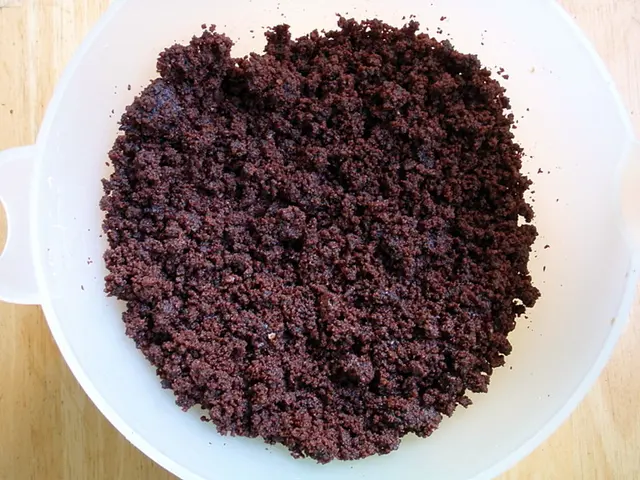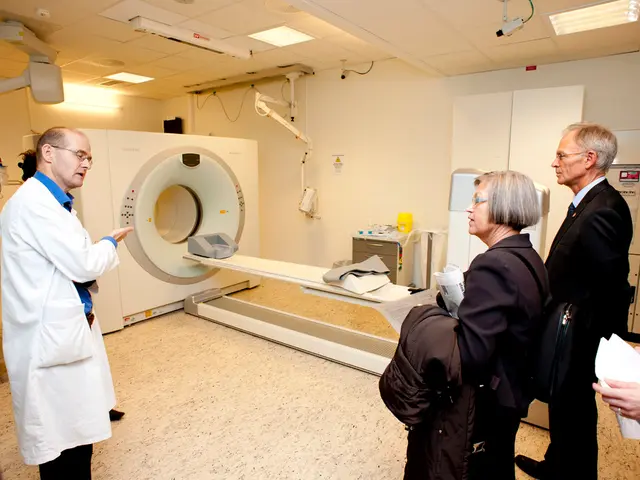Distinguishing between sunspots and skin cancer: Recognizing the variations
Spotting the Variations: An Insightful Guide to Age Spots and Skin Cancer
In the journey of life, some of us might notice unusual markings appearing on our skin as we grow older. While these spots may resemble symptoms of skin cancer, fear not! It's essential to understand the defining aspects that separate age spots from malignant growths. Let's delve into the differences between the two, along with their characteristics, symptoms, diagnosis, and treatments.
Different Strokes for Different Folks: Age Spots vs. Skin Cancer
Age spots and skin cancer might share a similar residence on our skin, but they differ in many aspects.
The Age-Old Phenomenon: Age Spots (Solar Lentigines)
Caused by the body overproducing melanin as a protective response to UV radiation, age spots are:- Small, light brown to black patches.- Generally flat and smooth, with varying sizes, from a couple of millimeters to centimeters.- Concentrated in sun-exposed areas, such as the face, hands, shoulders, arms, and feet.- Often symmetrically shaped, with well-defined borders.
A Geranium in the Garden of Cancer: Skin Cancer
Skin cancer presents in various ways, depending on the type:
Basal Cell Carcinoma:- Small, pearly bump, red or pink in color, with raised edges and a lower center.
Squamous Cell Carcinoma:- Red, scaly patch of skin or an open sore that won't heal.- Wart-like growth resembling a bump.
Melanoma:- Mole with asymmetrical shape, irregular borders, multiple colors, and a diameter larger than 6mm.- Evolution over time, exhibit changes in size, shape, color or symptoms.
Know Your Symptoms: Age Spots vs. Skin Cancer
Age Spots:- Generally symptoms-free, only presenting discoloration.- Commonly harmless, but might darken with age.
Skin Cancer:- Basal cell carcinoma might cause itching.- Squamous cell carcinoma often presents as an open sore that bleeds or oozes and then crusts over.- Melanoma may show a change in size, shape, or color over time.
When to Seek Help: Diagnosis and Treatment
Early diagnosis and treatment are crucial for skin cancer management. A trained healthcare professional should examine any unusual skin changes.
For age spots:- Cosmetic treatments, like laser therapy, can improve appearance if desired.
For skin cancer:- Treatment varies based on the type and stage, ranging from surgical excision to chemotherapy or immunotherapy.
In conclusion, keep a keen eye on your skin and consult a healthcare professional if you notice any unusual changes. Early detection can pave the way for effective treatments, ensuring a positive health outcome. So, don't let fear cloud your judgement - equip yourself with knowledge and take charge of your skin health!
- Seniors should be aware that science has made significant strides in the field of oncology, with advancements potentially beneficial in the early detection and treatment of skin cancer.
- Besides age spots, dermatology also focuses on managing other skin cancer types, such as melanoma, ensuring the overall health and wellness of individuals.
- A comprehensive understanding of medical-conditions like skin cancer and their symptoms, such as those relating to melanoma, is vital for practicing proper skin care and maintaining good skin conditions.
- In the realm of health and wellness, understanding the difference between age spots and skin cancer can lead to timely medical intervention, potentially reducing the risk for seniors.
- Proactive skin care, informed by medical research, can empower seniors to take charge of their skin health and detect any potential cancerous growths early.








